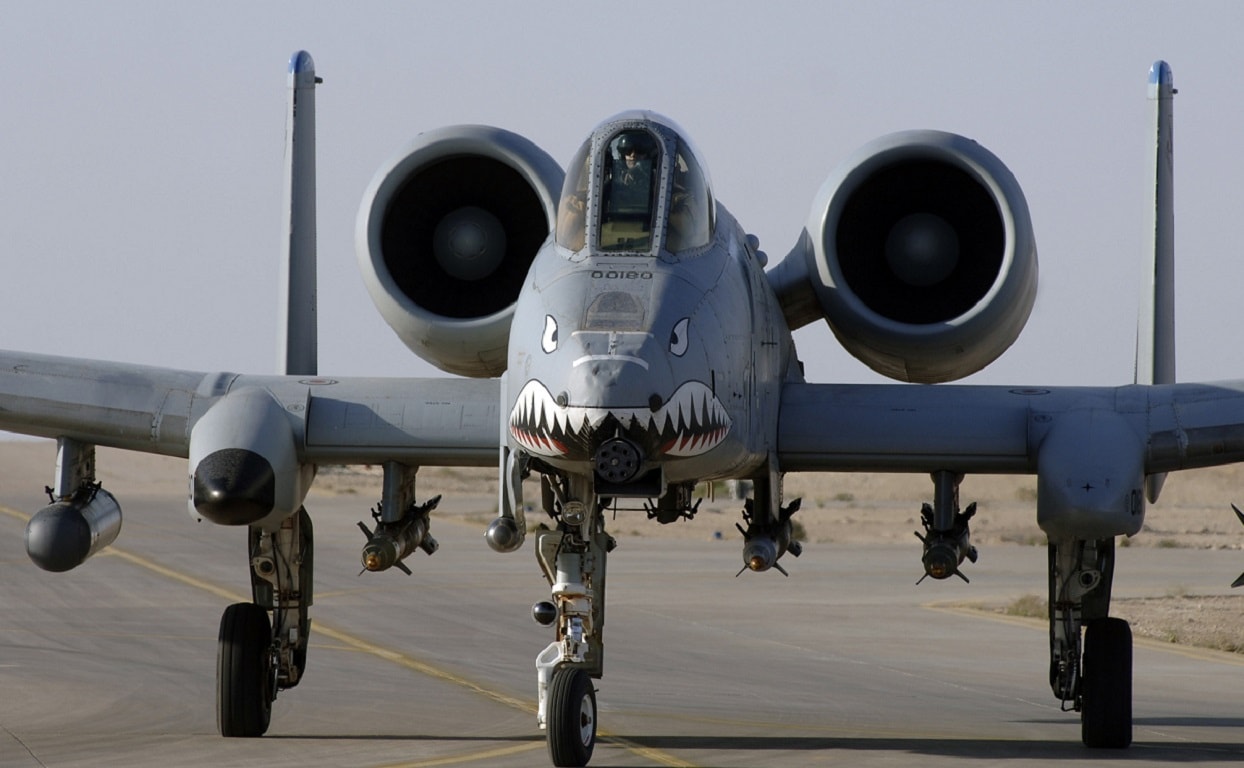During what began as a seemingly routine training mission over Michigan’s Grayling Air Gunnery Range on July 17, 2017, Capt. Brett DeVries of the Michigan Air National Guard’s 107th Fighter Squadron conducted what was later described as an “extraordinary flight achievement” for successfully landing his A-10 Thunderbolt II (tail number 80-0264) without a canopy or functioning landing gear! The aircraft’s 30mm cannon had misfired, which caused the canopy and several panels to blow off.
As he headed back to the Alpena Combat Readiness Training Center, DeVries’ wingman radioed to inform him of more bad news. The nose wheel was hung up and the main landing gear didn’t go down. DeVries was forced to make a belly landing with no wheels and no canopy. Not only was the pilot able to walk away and live to tell the story, but he made such a skilled landing that it was possible for the A-10 “Warthog” to be repaired and returned to service.
For such efforts, last year Air Force Secretary Barbara M. Barrett presented DeVries, who had been promoted to Major, with the Distinguished Flying Cross.
“The Distinguished Flying Cross is America’s oldest military aviation decoration,” Barrett said. “Awarded for heroism or extraordinary achievement that is, ‘entirely distinctive, involving operations that are not routine,’ today, Major DeVries, you will join the ranks of some other American heroes.”
Restoring the A-10
Following the incident, the Air Force contacted the elite team of A-10 experts at the 309th Aircraft Maintenance Group at Hill Air Force Base (AFB), Utah to do an initial evaluation and see what it would take to salvage the aircraft – and even whether it was possible.
“We knew we could do it, but it would take a long time,” said Daniel Wise, 571st Aircraft Maintenance Squadron A-10 planning chief. “We basically rebuilt the entire front of the A-10 without aided engineering and un-procurable parts that had to be local manufactured.”
Because the A-10 is no longer in production, and in fact is scheduled to be retired in the coming decade, every part that needed to be manufactured was done within the 309th Maintenance Group at Hill Air Force Base. Moreover, there were plenty of parts constraints on an aircraft that’s more than 40 years old.
“A lot of the parts are unavailable so we have to run them through our local manufacturing process and make them ourselves,” added Scott Oster 571st AMXS lead A-10 planner. “With any of the other weapons systems, if they have a bad part, they order it through supply and replace it. On the A-10’s, we’re kind of in a different world.”
The lead planner also explained that if parts had to be ordered under a contract solicitation it could take years. Instead, the local manufacturing process allowed the team to produce the needed parts, heat-treat, surface-treat and get the parts on the airplane in about two weeks.
In fact, because of DeVries’ skilled landing, the most significant damage occurred when the gun malfunctioned and not actually from the belly landing.
“There’s a main nose bean right next to the gun that blew up, so the inside of the entire gun cavity had to be rebuilt.” Oster said. “It was just a whole lot of structural work, like 90 percent.”
The A-10 engineers at Hill AFB are currently the only ones in the service who touch anything on the Cold War-era A-10s and they proved to be key to the success of rebuilding and restoring the damaged aircraft.
“It’s constant feedback between us and engineering,” Oster said. “We let them know what our expertise is, through our sheet metal and aircraft mechanics and they’re the ones who run analysis and say if the repair will work. It’s the whole team effort.”
It took the entire A-10 team working together to get 80-0264 back in the air and everyone involved should be very pleased.
“Our planners, schedulers, engineers, parts makers and everyone on the floor who put this legacy airframe back together are totally appreciated for their skill and overall effort,” Wise explained. “We’re all pretty passionate about keeping the A-10 alive and in the air. It’s America’s number-one choice for close-air support and getting 264 ready to fly back home is really something to be proud of.”
Now the question is whether DeVries will want to fly his old plane.
Peter Suciu is a Michigan-based writer who has contributed to more than four dozen magazines, newspapers and websites. He regularly writes about military small arms, and is the author of several books on military headgear including A Gallery of Military Headdress, which is available on Amazon.com.

